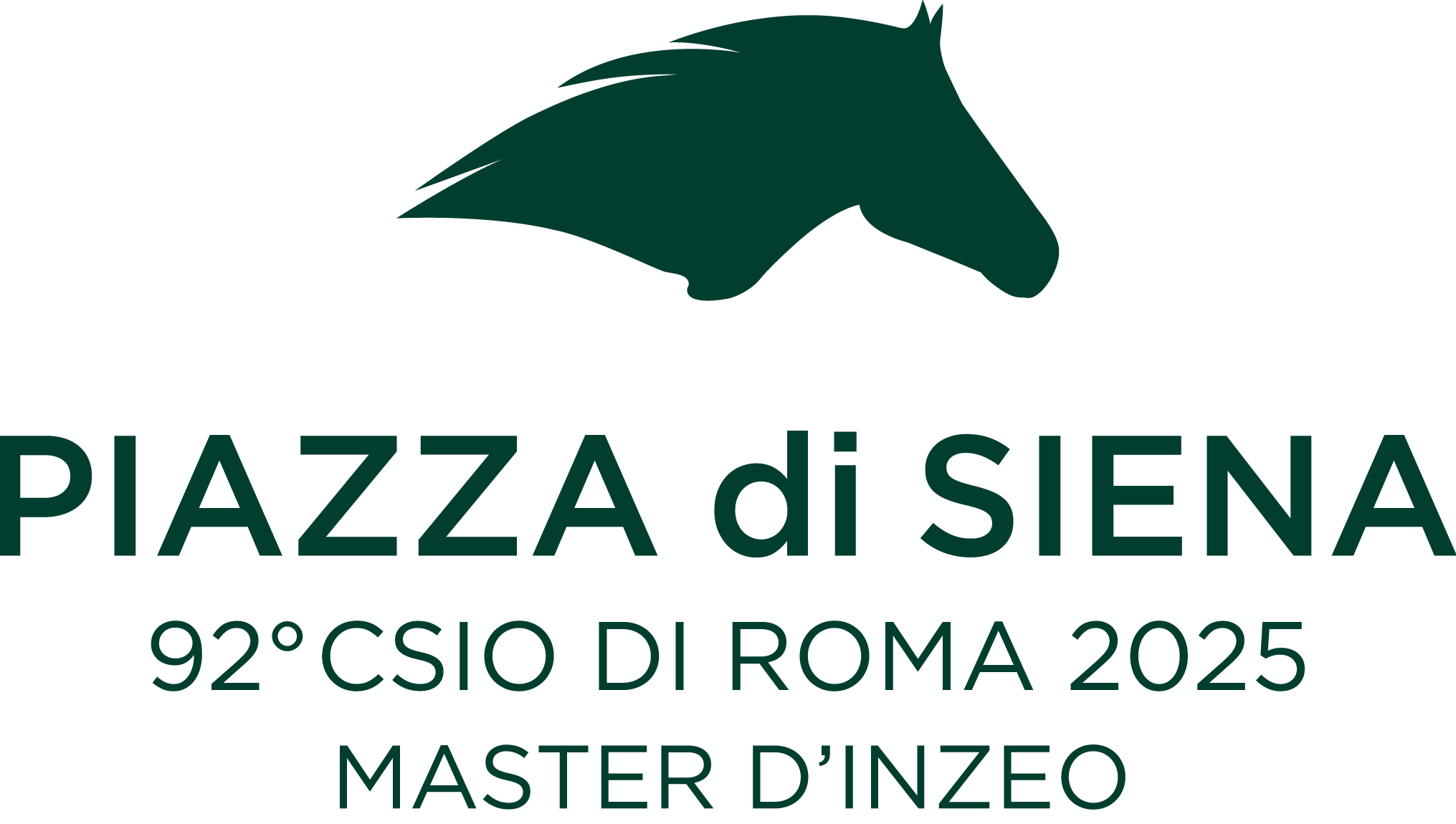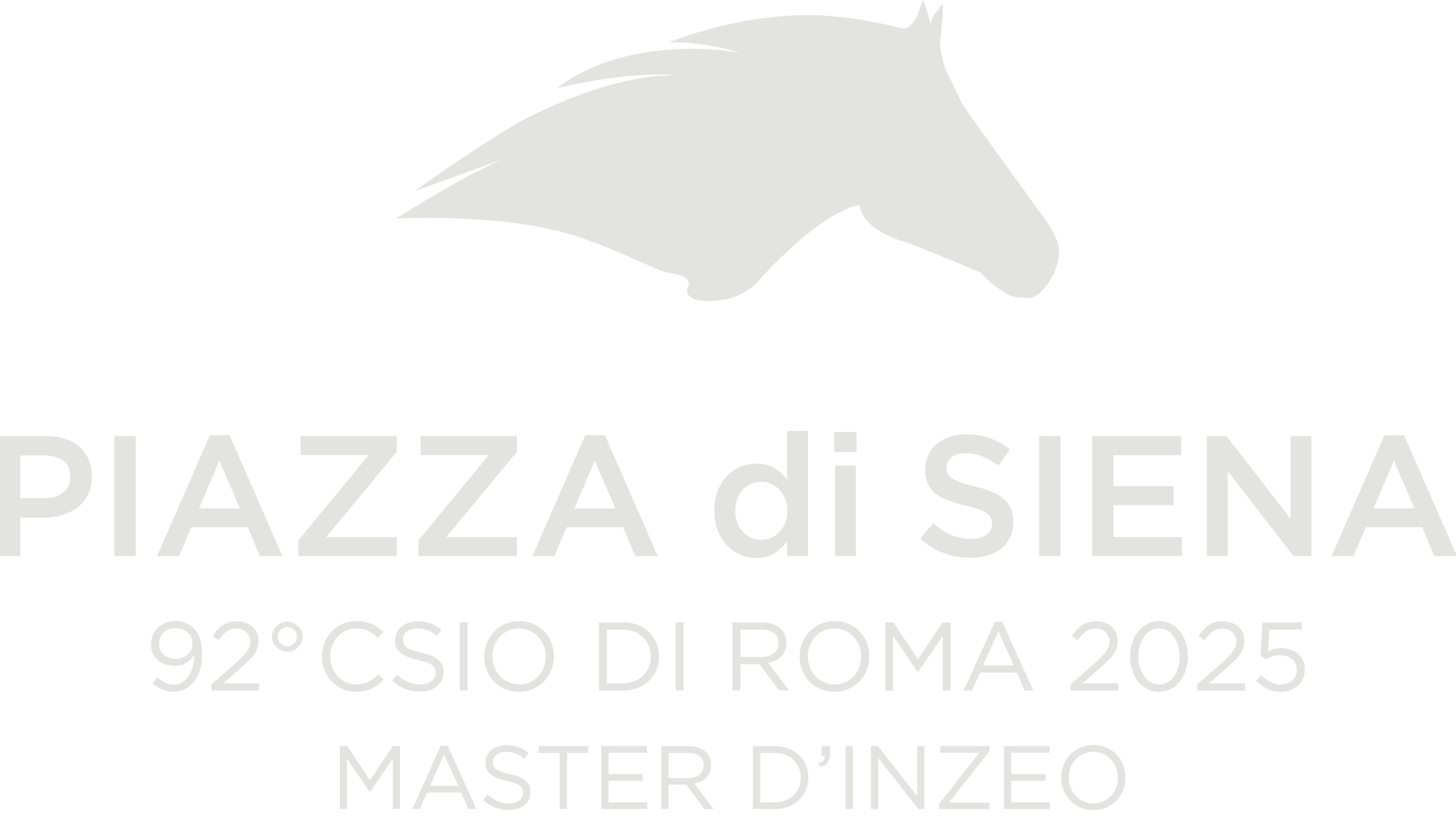THE SEVEN-YEAR LONG GREEN PROJECT
It was 2018 when the 'PDS Green Project' was launched with a new and revolutionary concept in mind; a sporting event model that would find its natural home in the Piazza di Siena Horse Show.
It was a zero-impact bio-architectural project, a watershed with respect to the past, which envisaged the use of eco-sustainable materials, with an overall vision to create a striking scenic effect, similar to that of the first competitions in the 1920s. The silica sand covering the surface of the historic arena was replaced by grass, as in its original design and set-up, and the project organisers (FISE and Sport e Salute Spa) signed an agreement with Roma Capitale to maintain the Piazza di Siena area throughout the year.
RESTORATIONS, RENOVATIONS AND IMPROVEMENTS
The Horse Show’s resources were used to restore the splendid old stands around the oval-shaped arena, which, once returned to the city, would again be a place for sport, leisure and socialising for citizens and tourists alike. In addition, the green areas were tended, the walls repaired and a new fence was erected around the entire perimeter.
But there is more. In fact, the project also featured the complete restoration of the Galoppatoio area to its former glory, after years of neglect, drug dealing and prostitution; the aim was to turn it into a venue for equestrian competitions but above all a 'stadium' for polo, a spectacular sport that boosted its attractiveness thanks to Piazza di Siena.
The other momentous change concerns the public. In fact, the 'Green Project' is a gift to citizens and fans of equestrian sports who can watch the competitions completely free of charge from the stands or from the sloping areas around the arena. The wooden facilities are designed and positioned with a view to enhancing the natural light, while the relationship of Piazza di Siena with art and culture becomes increasingly close, with countless initiatives and 'twinning' projects: from Gnam and the Villa Borghese Museum, to the celebration of the 500th anniversary of Leonardo da Vinci’s death, with contemporary artists' reinterpretations of Leonardo's Horse on display along Viale Canonica. So, art and culture, but also a commitment to biodiversity.
THE SPLENDOR OF THE VALLE DEI PLATANI AND THE MOSTRA DELL'ACQUA FELIX
The restoration of Valle dei Platani (Valley of Plane trees) was an extraordinary feat. Thanks to this project, these trees were pruned and the land was reclaimed since it was 'poisoned' by waste and pollution to the point of endangering the very life of the 'Sentinels of Rome’s Eternity', the 17th-century plane trees. This project, like others, was carried out with the invaluable help of the 'Amici di Villa Borghese' association, an organisation that has been passionately devoted to the protection of the architectural heritage and greenery of this Park for many years.
In 2020, the year of the pandemic, the Horse Show was put on hold; but despite the dramatic turn of events, the 'Green Project' by Sport e Salute and FISE found an extraordinary new lease of life: the school children from the Villa Borghese used the oval-shaped arena for their physical education activities. Then, when the equestrian events were resumed in Piazza di Siena, biodiversity was once again in the limelight with the 'ZeroDIE' project: the gravel on the ring around the oval-shaped arena was removed and replaced with grass, which created a huge 'green' 'Zero' in the spectacular image captured by drones, as if to say “No” to Deforestation, Impact and Emissions, hence the acronym DIE.
In 2023, the grass ring was merged with the arena thanks to a new turf. At the same time, the organisers invested over Є 2 million on a major, extraordinary project: Mostra dell'Acqua Felix, known as 'Fontana dei Leoni' located at the corner of Viale Canonica and Piazza delle Canestre, was completely restored and upgraded, along with the walls around the square. The result is breath-taking; the restoration team brought back to light the bas-reliefs, the fountains with dragon heads and the pink marble works of the basins, all made of precious marble extracted from now exhausted quarries; hence with an inestimable artistic value.
Meanwhile, Sport e Salute signed an agreement with Roma Capitale to maintain the “horizontal greenery” of the area that stretches from Piazza di Siena just up to Via Pinciana; the turf in the historic oval-shaped arena would be tended with a series of interventions such as reseeding, sanding, loosening, fertilisation and application of root bio-active and stimulating agents. This allows citizens and tourists to use it as a real 'open-air gym' where to enjoy recreational and sporting activities.
FROM THE 'RILIEVO DEL CAVALIERE' TO THE 'FONTANA DEI PUPAZZI'
In the 2024 edition, Piazza di Siena once again became an 'art venue' open to major art exhibitions in the Villa Borghese museums. For the first time, the Pietro Canonica Museum, on the opposite side with respect to Casino dell'Orologio, hosted the exhibition curated by Sandro Santolini, 'Questo è Aquilino figlio del vento' (This is Aquilino, son of the wind) from May 22 to September 15, 2024, featuring portraits of the Rospigliosi horses from the Capitoline collections. Moreover, the Piazza di Siena Horse Show was the occasion to showcase a sculptural relief of a rider 'Il Rilievo del Cavaliere’ dating back to the first half of the II century AD. This piece of work, still on display in the Casino dell'Orologio, consisted of eleven fragments that had been kept “dormant” in a store since 1989, before being skilfully restored thanks to the collaboration between the organisers of the Piazza di Siena Horse Show, FISE and Roma Capitale - Sovrintendenza Capitolina ai Beni Culturali (Capitoline Superintendence for Cultural Heritage). It is the relief of a young rider wearing a scale armour and lion-skin boots, holding the reins of a horse in his right hand.
His head, turned towards the horse, originally belonged to another ancient sculptural work. The type of armour, the exquisite horse fittings, the remains of the mysterious rider and, above all, the fact that the head was not part of the original work, became a real mystery, which led to many speculations. According to one of these, the rider was a figure of the highest rank, fuelling a debate about his mysterious identity; the most evocative hypothesis postulated that the young man might be Emperor Trajan.
For the 2025 edition, the project has envisaged the restoration of 'Fontana dei Pupazzi' and other important maintenance works of the oval-shaped arena and of its surrounding areas.


